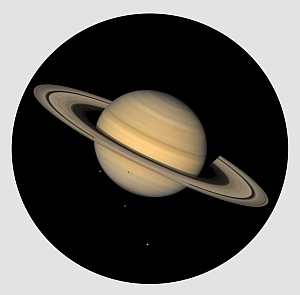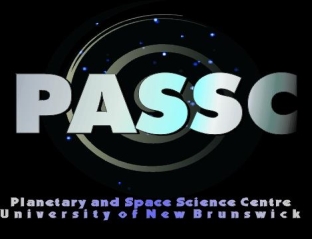|
Moon |
Mercury |
Venus |
Mars |
Asteroids |
Jupiter |
Saturn |
Uranus |
Neptune |
Pluto
SATURN

Missions to Saturn: Past, Present and Future
The following table lists all missions to Astroids, including those that failed, starting with the most recent. The table is colour coded to reflect the lead country or space agency, and missions are listed by launch date. The RPIF, here at UNB holds data and images from many of the NASA led missions.
Any questions or comments please
Contact PASSC.
Red - USSR or Russian led missions
Blue - NASA led missions
Purple - Japanese Space Agency led missions
Green - European Space Agency led missions
Yellow - China National Space Administration led missions
Orange - Indian Space Research Organization
| Launch Date |
Mission |
Success |
Type |
Instruments |
Goal |
Database |
| 1997/10 |
Cassini |
In Progress
(Orbit was successful in 2004) |
Probe & Orbiter |
-Radar mapper
-CCD imaging system
-Visible/infrared mapping spectrometer
-Composite infrared spectrometer
-Cosmic dust analyzer
-Plasma spectrometer
-Ultraviolet imaging spectrograph
-Magnetospheric imaging instrument
-Magnetometer
-Ion/neutral mass spectrometer |
-Determine the three dimensional structure and dynamic behavior of the Saturn ring
-Determine the composition of the satellite surfaces and geological history
-Determine the nature and origin of the dark materials on Iapetus’ (third largest natural satellite of Saturn) leading hemisphere
-Measure the three dimensional structure and dynamical behavior of the magnetosphere
-Study the dynamic behavior of Saturn’s atmosphere at cloud level
-Study the time variability of Titan’s clouds and hazes
-Characterize Titan’s surface on a regional scale |
Yes |
| 2004/12 |
Huygens |
Yes |
Lander |
-Aerosol Collector and Pyrolyser
-Descent Imager and Spectral Radiometer
-Doppler Wind Experiment
-Gas Chromograph and Mass Spectrometer
-Huygens Atmospheric Structure Instrument
-Surface Science Package |
-Determine the physical characteristics (density, pressure, temperature, etc.) of Titan's atmosphere as a function of height
-Measure the abundance of atmospheric constituents
-Investigate the atmosphere's chemistry and photochemistry, especially with regard to organic molecules and the formation and composition of aerosols
-Characterize the meteorology of Titan, particularly with respect to cloud physics, lightning discharges, and general circulation
-Examine the physical state, topography, and composition of the surface. |
Yes |
| 1977/09 |
Voyager 1 |
Success
(Voyager 1 met all of its goals except for the experiments planned for its photopo-larimeter, which failed to operate) |
Flyby & Probe |
-Imaging system
-Ultraviolet spectrometer
-Infrared spectrometer
-Planetary radio astronomy experiment
-Photopolarimeter
-Magnetometers
-Plasma particles experiment
-Low-energy charged-particles experiment
-Plasma waves experiment
-Cosmic-ray telescope |
The objective/goal was identical to its sister spacecraft. |
Yes |
| 1977/08 |
Voyager 2 |
Success |
Flyby & Probe |
-High-gain antenna
-Low-gain antenna
-Computer Command Subsystem (CCS)
-Attitude and Articulation Control Subsystem (AACS)
-Flight Data Subsystem (FDS)
-Radioisotope thermoelectric generators (RTGs)
-Photopolarimeter |
-Explore the outer solar system including Jupiter, Saturn, Uranus and Neptune.
-Investigate the circulation, dynamics, structure and composition of the planet’s atmosphere
-Characterize the morphology, geology, and physical state of the satellites of the planet
-Provide improved values for the mass, size and shape of the planet, its satellites, and any rings
-Determine the magnetic field structure and characterize the composition and distribution of energetic trapped particles and plasma therein. |
Yes |
| 1973/04 |
Pioneer 11 |
Success |
Flyby |
-Imaging photopolarimeter
–Magnetometer
-Infrared radiometer
-Plasma analyzer
-Ultraviolet photometer
-Charged-particle composition instrument
-Cosmic-ray telescope
-Geiger tube telescopes
-Asteroid/meteoroid detector
-Jovian trapped-radiation detector
-Meteoroid detector
-Fluxgate magnetometer |
-Explore the planet Saturn and its main rings
-Investigate Jupiter and the outer solar system
-Study interplanetary and planetary magnetic fields, solar wind properties, cosmic rays, transition region of the heliosphere, neutral hydrogen abundance, the distribution, size, mass, flux, and velocity of dust particles, Jovian aurorae, Jovian radio waves |
Yes |
|
